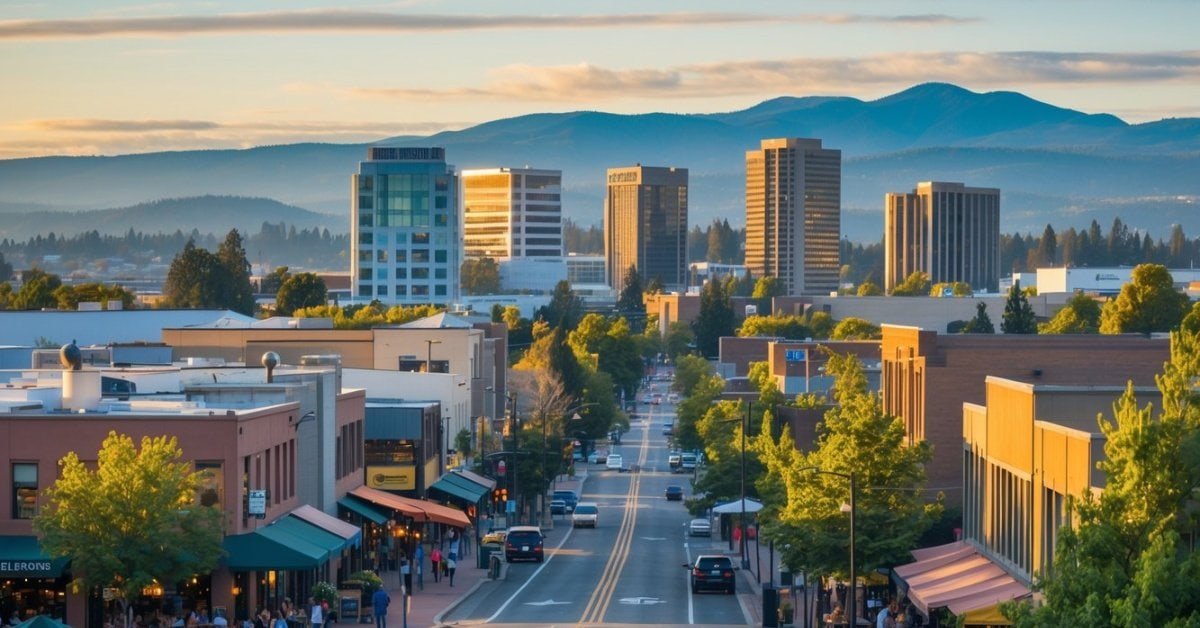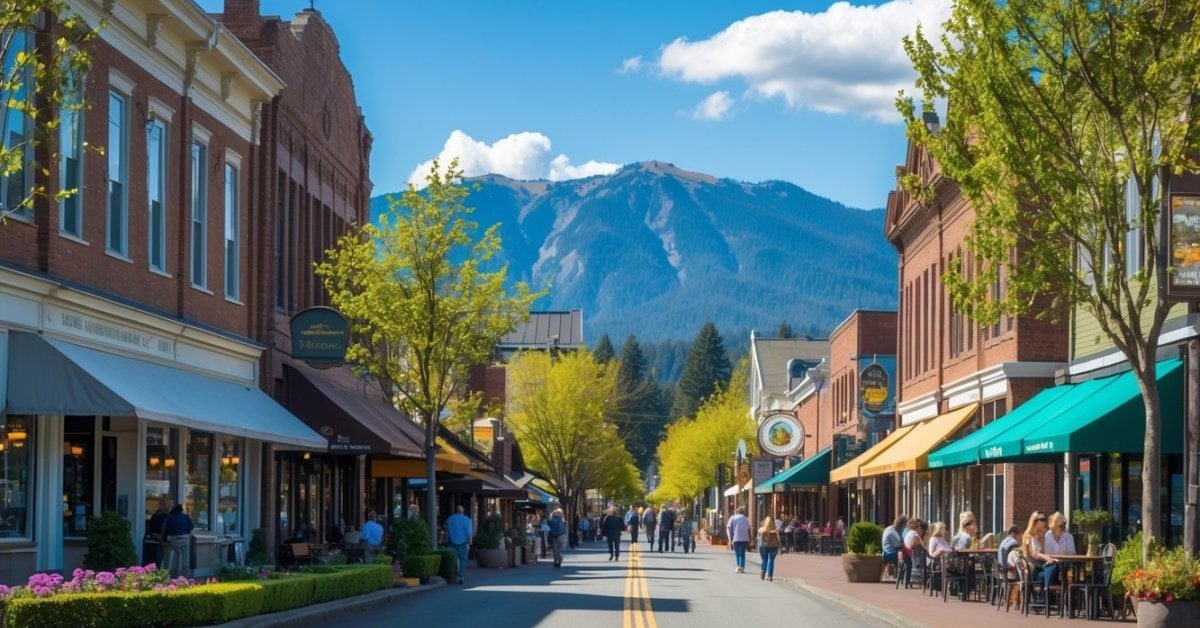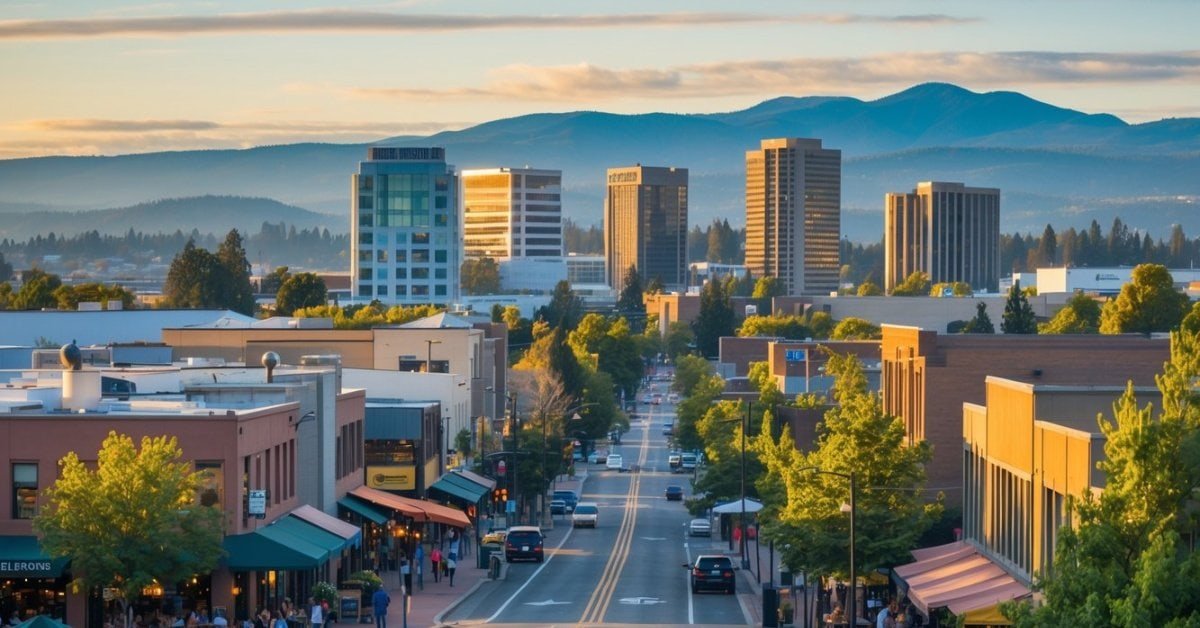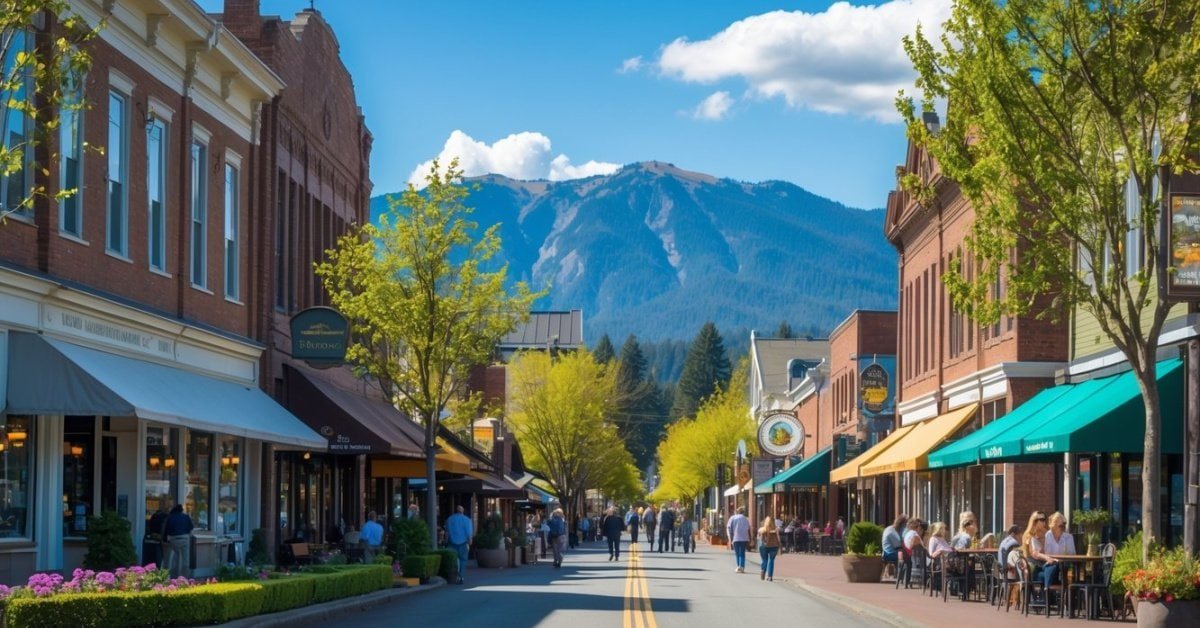When I think of soccer in the Pacific Northwest, the Portland Timbers instantly come to mind. There’s just something electric about the way this city rallies behind its team. From the roar of the Timbers Army to the sea of green and gold scarves, game days feel like a celebration that spills out into the streets.
I’ve always been fascinated by how soccer weaves itself into the fabric of Portland life. It’s more than just a sport here—it’s a shared passion that brings neighbors together and creates lifelong memories. Whether you’re a die-hard fan or just discovering the game, the Timbers’ unique culture is impossible to ignore.
The Rise of the Portland Timbers
Living in Oregon as long as I have, I’ve seen the transformation of soccer culture in Portland firsthand. The Portland Timbers started in 1975, joining the original North American Soccer League. Fans filled Civic Stadium, with crowds topping 30,000 for playoff matches. Timbers fever gripped the city, with green and gold gear spreading through downtown streets.
When the club reemerged in 2001 for the A-League, energy from dedicated supporters kept the spirit alive. By 2011, the Timbers joined Major League Soccer, and Providence Park filled rapidly for every home game. Tickets rarely sat unsold for hours once released. I’ve seen the stadium pulse with chants, flags waving, and log slices handed out after every goal.
Growth of the Timbers Army, one of the most passionate supporter groups in the U.S., fueled this rise. Home and away, thousands traveled to matches, bringing coordinated songs and impressive tifo displays. Rivalries with Seattle Sounders and Vancouver Whitecaps grew more intense, building anticipation weeks ahead of each Cascadia Cup clash.
Local youth leagues saw a surge in participation since MLS expansion, with players looking up to Portland’s stars. Media coverage, merchandise sales, and TV ratings increased every season following the MLS launch. The Timbers have become more than a team—they’ve become a cultural landmark for Portland and all of Oregon.
History and Evolution of the Timbers Army
The Timbers Army began in the early 2000s with a small group of local supporters showing up behind the north goal at Civic Stadium. I watched as that initial group brought banners, drums, and flags—traits that set the section apart from other soccer fans in Oregon. Active participation in match-day chants and tifo displays quickly drew more Portlanders into the fold.
Sustained backing for the Portland Timbers grew when the club restarted in the A-League in 2001. Local organizers, many of whom I knew from around Portland, formalized activities with member meetings, annual traditions, and away game travel. The Army became visible throughout downtown by painting two-pole signs, sharing supporter scarves, and hosting fundraisers for local causes.
The transition to Major League Soccer in 2011 marked the Timbers Army’s rise to national attention. Supporters worked with the club on stadium design, brought their signature log slab into the north end, and drew attention from international soccer communities. Regular attendance reached 4,000+ in the north end by 2013, with the group leading smoke displays and choreographed chants that filled Providence Park.
Participation in community initiatives formed a core part of the Army’s identity. Members coordinated charity drives supporting Oregon food banks and LGBTQ+ organizations and fostered a reputation as inclusive, civic-minded fans. My neighbors in neighborhoods from St. Johns to Southeast Portland recognized the Timbers Army’s impact in youth soccer sponsorships and match-day street cleanups.
Over two decades, the Timbers Army evolved from a handful of die-hards to Oregon’s most influential supporter culture. In every corner of Portland and far beyond, their match-day rituals—singing, scarf-waving, log-cutting—remain uniquely Oregonian traditions that shape soccer in the state.
Providence Park: More Than Just a Stadium
I see Providence Park as the living heart of Portland’s soccer culture. Locals and out-of-towners alike recognize it for its downtown location and century-old roots. Opened in 1926, this venue’s welcomed everything from baseball and American football to international soccer exhibitions. I find the stadium’s history written in its old-growth wooden beams, Art Deco details, and the echoes of Timbers Army chants during every match.
I notice how game days transform the neighborhood blocks around SW Morrison Street. Food carts cluster along the sidewalks, cafes serve up local brews, and thousands in Timbers green stream toward the gates. People greet each other with chants or scarves raised—soccer fans, sure, but also neighbors and families. You’ll see murals, pop-up vendors selling Timbers gear, and street musicians fueling the pre-game buzz.
I’ve met Portlanders who buy tickets just to take part in the community—the timbers log slice tradition, smoke-filled goal celebrations, and Tifo displays. Beyond matches, Providence Park hosts local nonprofit events, youth soccer clinics, and free public tours. Civic groups use the venue for fundraisers and pride events, deepening the connection between the city, the stadium, and the Timbers legacy.
Historic roots and modern amenities blend seamlessly at Providence Park. I experience this every visit—the energy of a packed North End, the accessible light rail stop out front, and city skyline views. Longtime fans know the stadium as Civic, Civic Stadium, PGE Park, or Jeld-Wen Field, but every generation finds something new to love here.
Fan Traditions and Matchday Experience
Matchdays at Providence Park deliver a scene that’s unique in US soccer. Crowds fill the streets hours before kickoff and the ritual starts long before the first whistle.
Iconic Chants and Songs
Timbers Army fans lead chants like “Portland Boys, We Are Here” and “No Pity in the Rose City,” echoing across the stands. Groups chant in unison, using drumbeats and megaphones to rally thousands. “You Are My Sunshine” plays in the final moments, giving the stadium a chorus that feels both local and emotional. Banners and scarves rise during every anthem, with hand-painted tifo displays showing Portland pride. I see fans of all ages learning these tunes before their first match, then joining in by their second.
The Timber Joey Tradition
Timber Joey, the club’s chainsaw-wielding mascot, slices a slab from a giant log after every Portland goal. The entire stadium stands ready, waiting to cheer as sawdust flies in the air. For each goal, the log slab goes to the scoring player as a memento. The scent of fresh-cut wood lingers in the air, connecting old Oregon timber history to the new soccer era. I’ve watched visiting fans pause, often snapping photos or asking about the tradition because it stands out so much. Timber Joey’s role ties together past and present, giving every match a piece of Oregon’s roots.
The Timbers’ Impact on Oregon’s Soccer Landscape
Portland Timbers matches anchor the soccer scene across Oregon. Their on-field success since joining MLS in 2011 sparked steady growth in youth clubs, high school programs, and amateur leagues throughout the state. I see more local parks lined with goals and young players in Timbers kits than ever before. Communities from Bend to Medford reference the Timbers as inspiration for their own regional teams, showing the team’s reach extends far past Portland.
Media coverage of the Timbers dominates regional sports news. Stations like KPTV regularly air match highlights and interviews, while Oregon Public Broadcasting features Timbers stories alongside statewide issues, helping soccer claim a stronger presence in Oregon’s sports narrative.
Youth development programs maintained by the Timbers organization increase participation rates statewide. Academy scouts search from Eugene to Pendleton for talent, giving motivated players a path from local clubs to the pros. Every year, hundreds of Oregon youth try out for these opportunities, and some even receive national team call-ups, connecting rural communities with world-class soccer.
Local businesses and sponsors invest in the Timbers community, with companies like Widmer Brothers and Alaska Airlines partnering on events and supporting youth soccer initiatives. I see these collaborations boost economic activity during the season, as downtown businesses near Providence Park fill up on game nights and local sports retailers experience surges in Timbers merchandise sales.
Soccer-related nonprofits and charities founded by fans and club leaders focus on inclusivity and giving back. Organizations like Operation Pitch Invasion create and maintain fields throughout Oregon, while the Timbers’ Stand Together platform donates thousands of volunteer hours and resources to causes statewide.
Below is a table showing select impacts since the team’s MLS entry:
| Impact | Description |
|---|---|
| Youth participation | Doubled in organized soccer from 2011 to 2022 [OSAA] |
| Economic activity | $30M+ annual impact on Portland events sector [Travel Portland] |
| Field development | 50+ new or refurbished community fields (2011-2023) |
| Media coverage | 5x more yearly TV features since 2011 |
Based on my experience traveling the state, I’ve found the Portland Timbers fuel Oregon’s soccer culture at every level, weaving the sport into daily life from small towns to Portland’s core.
Community Involvement and Youth Development
Portland Timbers community involvement shapes Oregon’s soccer landscape through extensive outreach programs, local partnerships, and accessible youth initiatives. I’ve watched families gather at Timbers Street Soccer events in parks across Portland, where the club’s staff runs free soccer clinics for children from neighborhoods like Lents, St. Johns, and Montavilla. Local schools, including Portland Public Schools and Beaverton School District, participate in Timbers-hosted assemblies and after-school fitness sessions, deepening those first soccer experiences for thousands of Oregon kids each year.
Timbers youth development programs connect young athletes to high-level coaching and competition across the state. The Timbers Academy accepts boys from ages 12 to 19, scouting talented players from cities like Eugene, Salem, and Bend. My conversations with parents at Eastside Timbers Club revealed that the developmental pathway remains clear: perform in MLS NEXT leagues, attend training at adidas Timbers Training Center, and top prospects earn trials with the Timbers U23s or the first team. In 2023, five Oregon-born players joined the Academy’s top squad, reflecting the direct impact on local growth.
Community-driven initiatives that I’ve attended, such as Stand Together Week, invite Timbers players and fans to volunteer at organizations like Oregon Food Bank, Habitat for Humanity Portland, and Friends of Trees. I often see the Timbers Army leading coat drives, school supply collections, and annual workdays at community gardens, helping bridge the gap between pro soccer and everyday life in Portland. The club’s relationship with nonprofits, like Street Soccer USA—Portland, provides ongoing support to people experiencing homelessness through sport and mentorship.
Supporting diversity also stands out in Timbers outreach. Hispanic and refugee youth programs operate every summer in Gresham and Hillsboro with bilingual coaches and scholarship options. My friends in the local Somali soccer community frequently note the respect shown by the Timbers staff and club at multicultural festivals and futsal events.
The Timbers organization’s investment in grassroots soccer ties to long-term regional growth. Since 2011, I’ve tracked nearly 20 mini-pitch projects completed through the club’s partnerships with Portland Parks & Recreation and 76® gas stations, creating new soccer opportunities for neighborhoods lacking green space. These fields, playgrounds, and futsal courts give kids around Portland, Woodburn, and even eastern parts of Oregon access to the game—and a reason to keep wearing Timbers green.
Timbers Community Involvement: Recent Initiatives
| Program/Event | Location | Population Reached | Partnerships |
|---|---|---|---|
| Timbers Street Soccer | Multiple Portland | 1,500+ youth | Portland Parks & Recreation |
| Stand Together Week | Portland Metro | 3,000+ volunteers | Oregon Food Bank, Habitat for Humanity |
| Mini-Pitch Project | Statewide | 15+ neighborhoods | 76® gas stations, city governments |
| Youth Academy Tryouts | Salem, Eugene, Bend | 200+ players | Local youth clubs, MLS NEXT |
| Multicultural Soccer Clinics | Gresham, Hillsboro | 600+ youth | Street Soccer USA, Mercy Corps |
Conclusion
Every time I walk into Providence Park or hear the echo of chants through the city streets I’m reminded that the Portland Timbers are so much more than just a soccer club. The energy here is contagious and the sense of belonging runs deep.
Being part of this community has shown me how powerful sports can be in bringing people together. Whether you’re a lifelong supporter or just discovering the magic of matchday the Timbers culture in Oregon welcomes everyone with open arms.





